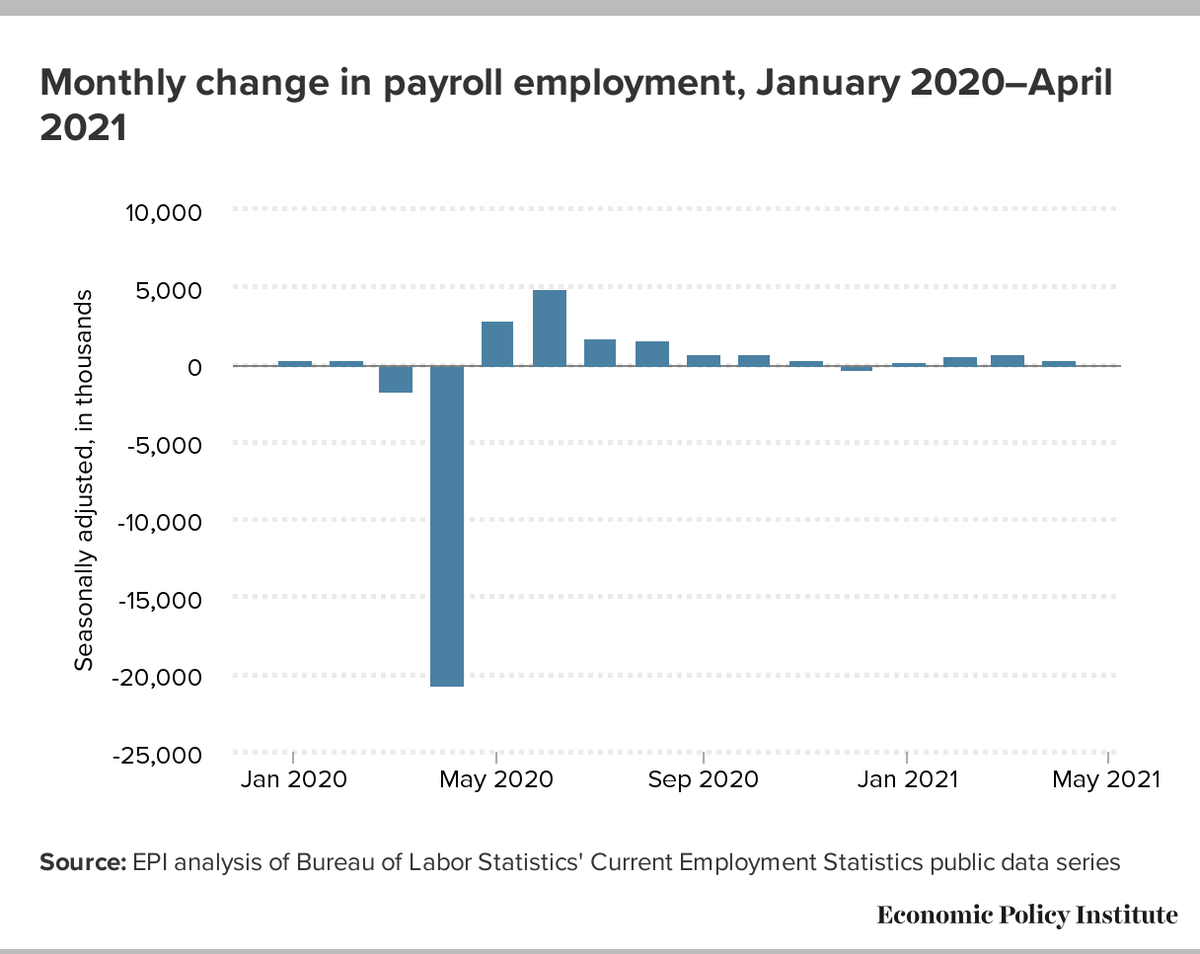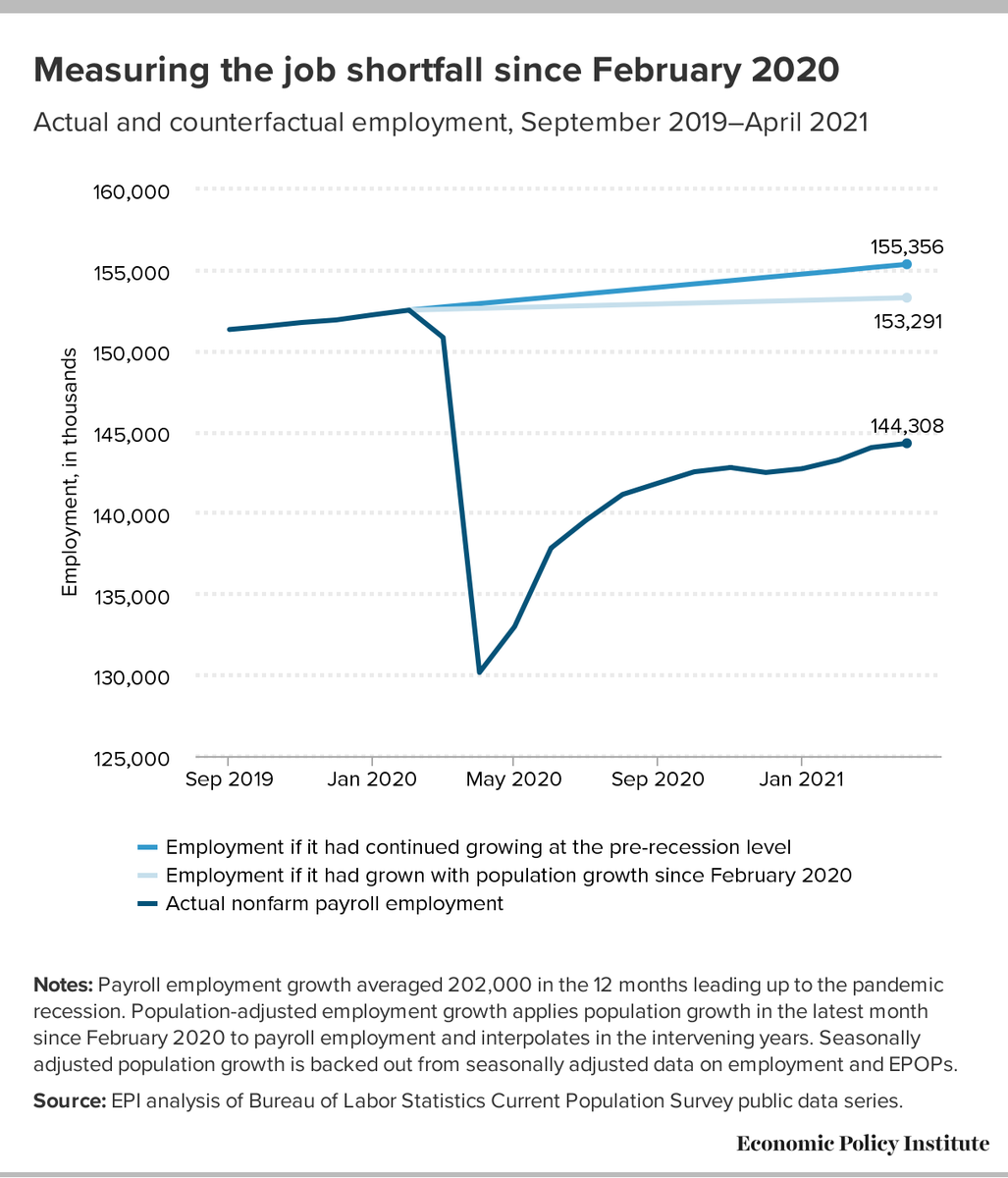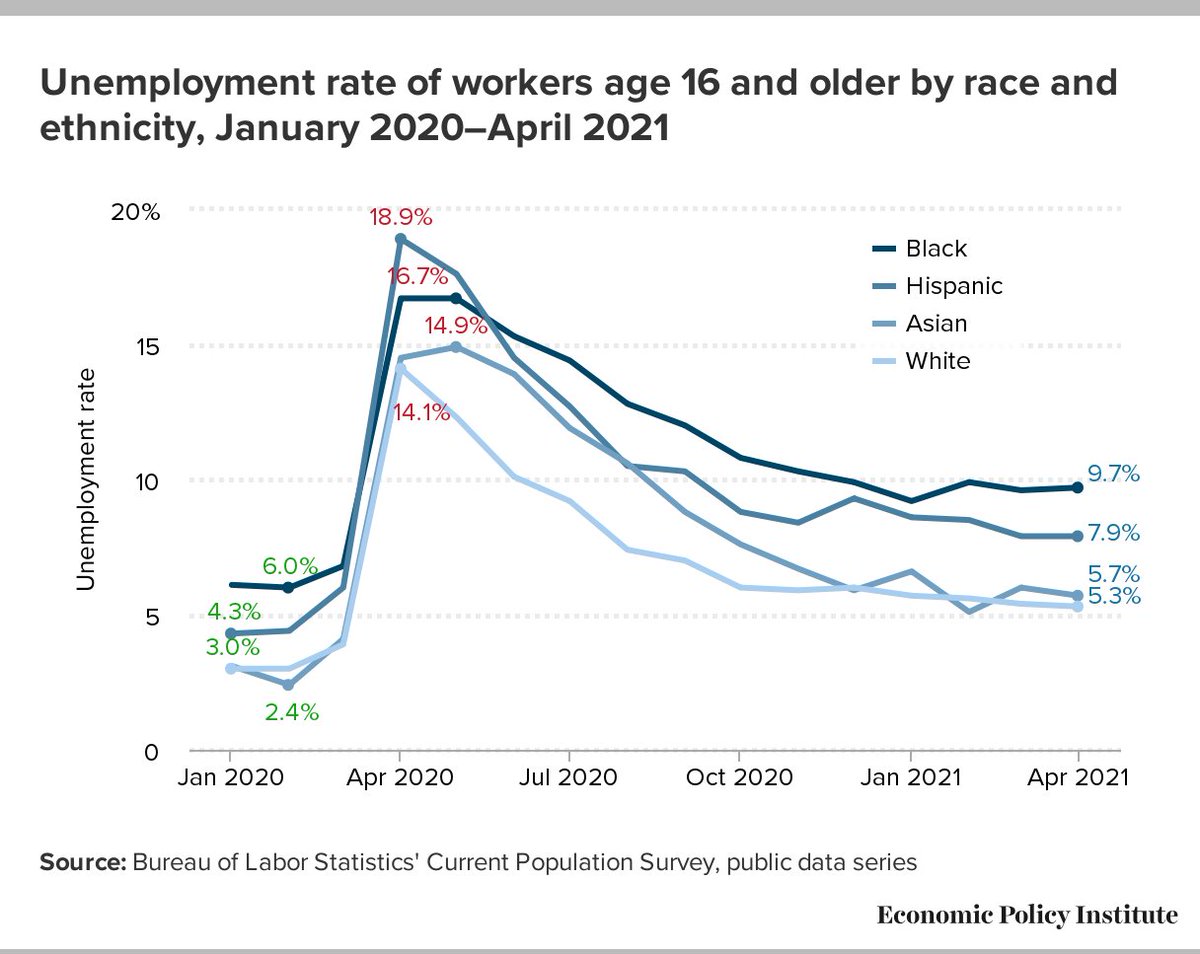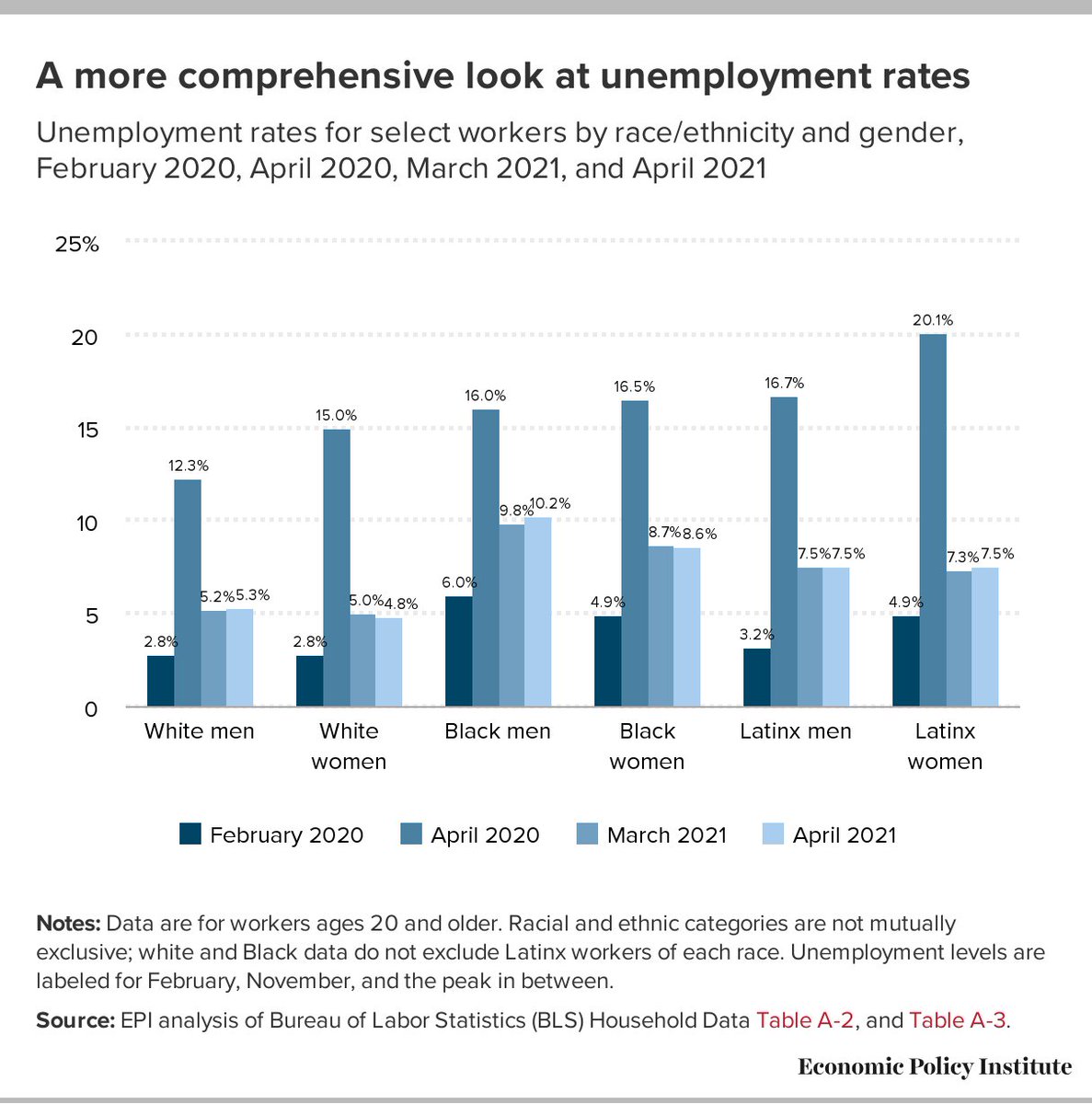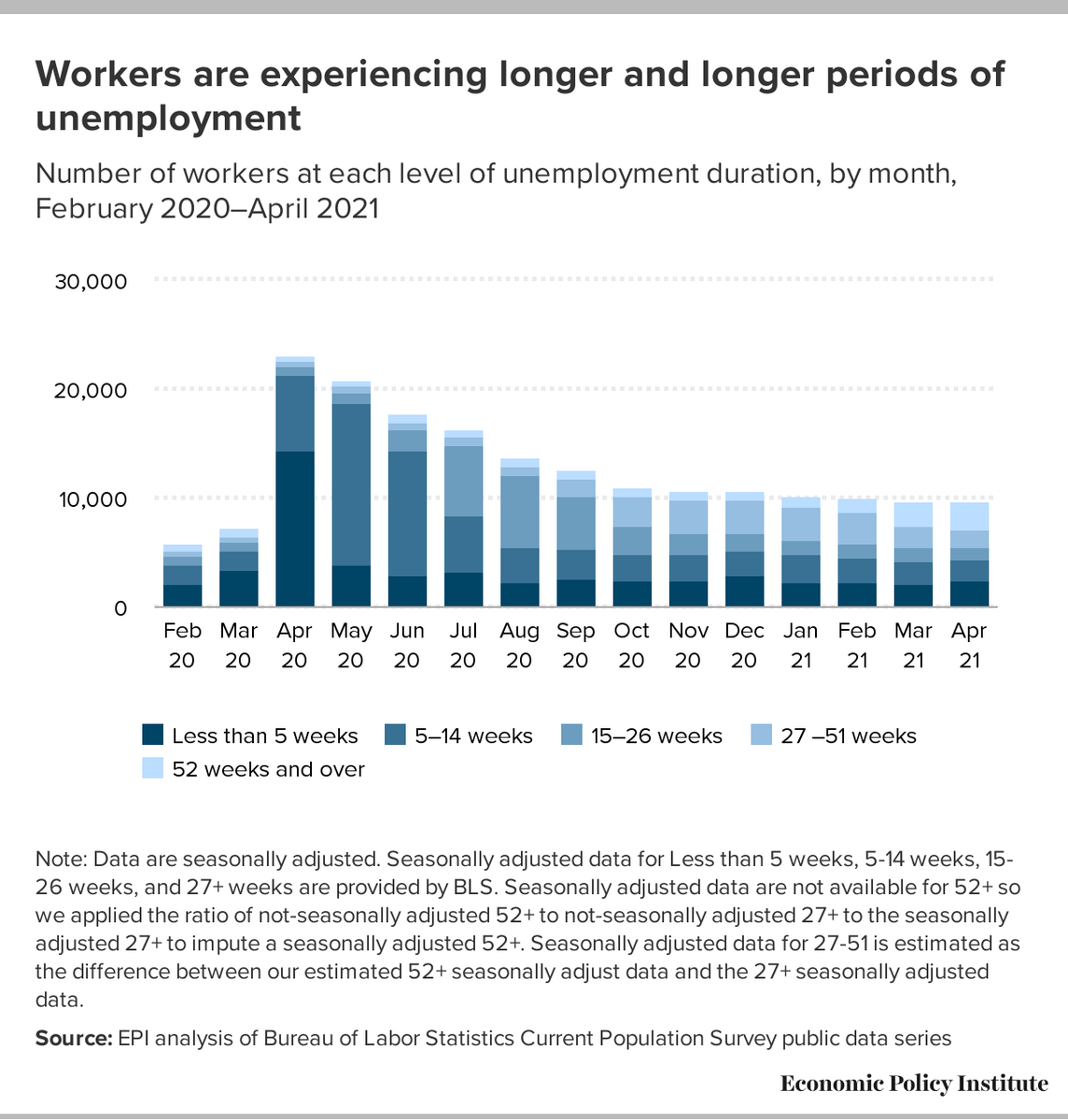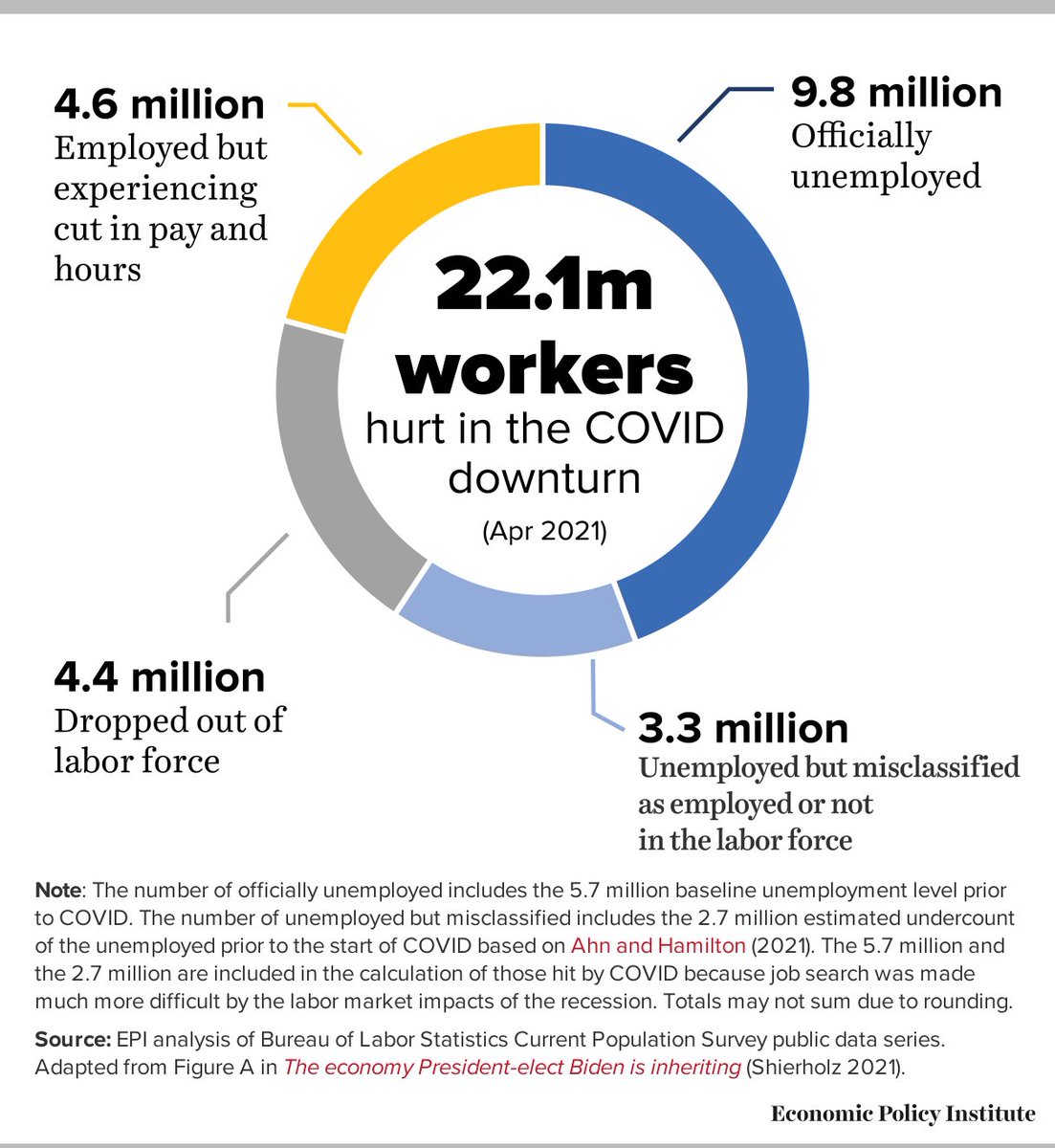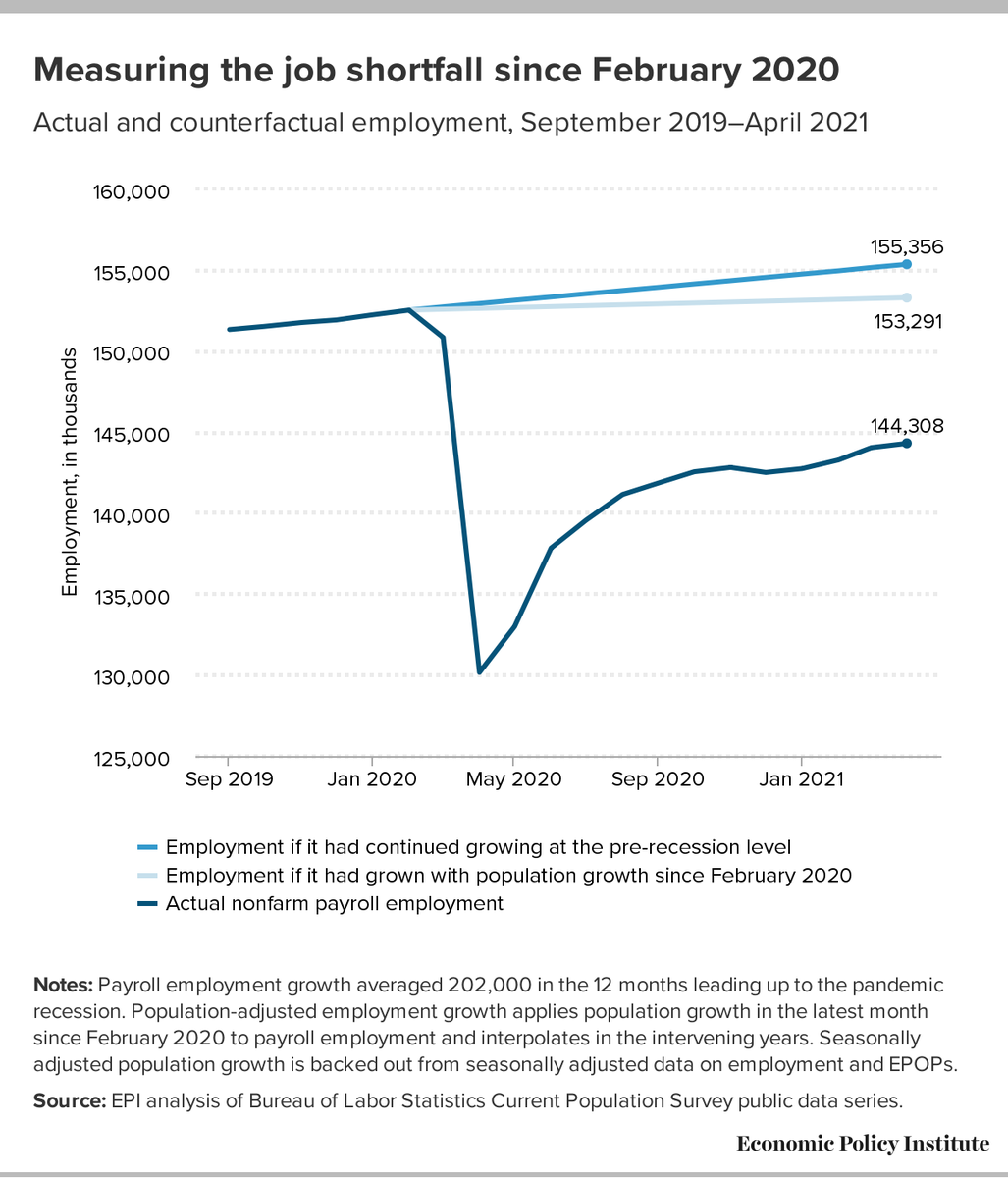While a disappointing jobs report, job gains in leisure and hospitality respond to increased demand in April
1/n https://www.epi.org/blog/while-a-disappointing-jobs-report-job-gains-in-leisure-and-hospitality-respond-to-increased-demand-in-april/">https://www.epi.org/blog/whil...
1/n https://www.epi.org/blog/while-a-disappointing-jobs-report-job-gains-in-leisure-and-hospitality-respond-to-increased-demand-in-april/">https://www.epi.org/blog/whil...
A disappointing 266k jobs were added in April, and March’s employment number was revised down by 78k. While the overall growth was far below expectations, leisure and hospitality gained 331k, a sign that increased demand has led to significant gains in employment in that sector.
The unemployment rate ticked up in April to 6.1%, in large part due to workers beginning to return to the labor force in search of jobs. The labor force increased by 430,000 workers in April, the largest gain in six months.
https://www.bls.gov/news.release/pdf/empsit.pdf
3/">https://www.bls.gov/news.rele...
https://www.bls.gov/news.release/pdf/empsit.pdf
3/">https://www.bls.gov/news.rele...
Likely in response to improving public health metrics and increased expectations of job opportunities, more and more workers are actively returning to the labor force in search of work.
4/
4/
While wage growth will be the leading indicator of employers having to bid up wages to attract workers, the significant rise in the labor force runs counter to anecdotal claims of labor shortages.
https://www.epi.org/blog/u-s-labor-shortage-unlikely-heres-why/
https://www.epi.org/blog/u-s-... href=" https://twitter.com/hshierholz/status/1390660946377379844?s=20
5/">https://twitter.com/hshierhol...
https://www.epi.org/blog/u-s-labor-shortage-unlikely-heres-why/
5/">https://twitter.com/hshierhol...
We are still down 8.2 million jobs from the pre-pandemic labor market. But if we include the likelihood that thousands of jobs would have been added each month over the last year without the pandemic recession, the jobs shortfall is likely in the range of 9.0 to 11.0 million.
6/
6/
The Black unemployment rate rose slightly to 9.7%, making Black workers the only racial and ethnic group (as a whole) to experience worsening metrics. Meanwhile, the white unemployment rate fell to 5.3%. Clearly, these two groups are experiencing a very different labor market.
7/
7/
When we look at the intersectional data, additional patterns emerge. Latina workers also experienced an increase in unemployment in April and Black men have the highest unemployment rate at 10.2%, higher than the overall peak in the Great Recession.
8/
8/
Long-term unemployment (LTU)—27+ wks unemployed—fell slightly while the mild increase in the unemployment rate was due to those unemployed less than 5 wks. Among the LTU, improvements in those unemployed 27-51 wks were largely offset by increases in those unemployed 52+ wks.
9/
9/
Only 18.3% of the workforce teleworked in April. As the economy absorbs more leisure and hospitality workers, I expect this number to keep falling. This also means that over 80% of workers are going to work in-person, risking their health as the pandemic continues to spread.
10/
10/
22.1 million people are economically hurt in the COVID downturn!
Officially unemployed
+ those unemployed but misclassified as employed or not in the labor force
+ those who dropped out of the labor force
+ those employed but experiencing a cut in pay and hours.
11/
Officially unemployed
+ those unemployed but misclassified as employed or not in the labor force
+ those who dropped out of the labor force
+ those employed but experiencing a cut in pay and hours.
11/
The U.S. labor market is still facing a massive jobs shortfall. Now is not the time to turn off vital relief—including expanded unemployment benefits—to workers and their families.
12/
12/
For more @EconomicPolicy& #39;s jobs day analysis and graphics, please visit: https://www.epi.org/indicators/unemployment/.
Huge">https://www.epi.org/indicator... shout out to @Dannperr, @its_Melat, @joriskywalker, @AshaBanerjee, @NKauzlarich, and @hshierholz for assistance with this report. All errors are mine.
13/13
Huge">https://www.epi.org/indicator... shout out to @Dannperr, @its_Melat, @joriskywalker, @AshaBanerjee, @NKauzlarich, and @hshierholz for assistance with this report. All errors are mine.
13/13

 Read on Twitter
Read on Twitter